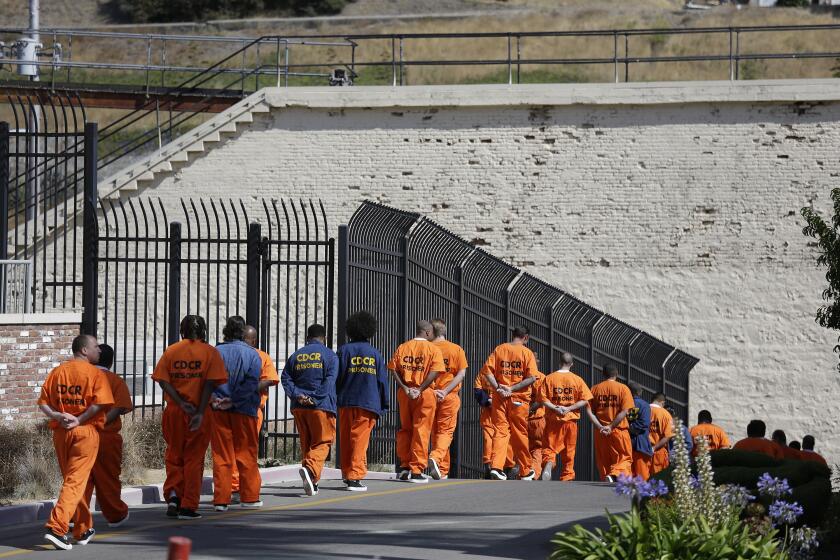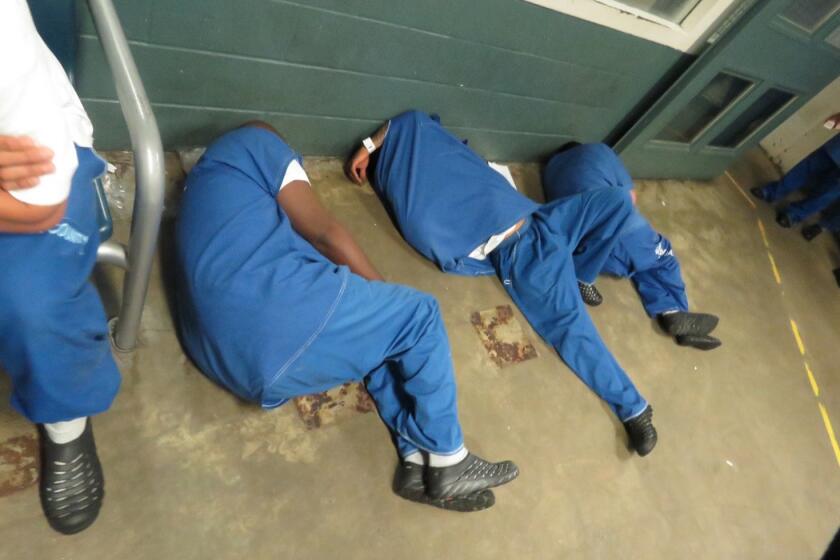Opinion: A deadly but curable disease is thriving in L.A.’s jails. That’s unacceptable

During my five years as a doctor in Los Angeles County’s jail system, I personally saw hundreds of patients with hepatitis C who were not being treated for the potentially deadly but curable disease. While hepatitis C treatment improved incrementally during my tenure, the system continues to fall woefully short of the sort of concerted effort that could dramatically reduce the toll of the infection within and beyond the jails.
Hepatitis C, a viral, blood-borne liver disease, is very common in the jails. More than a third of inmates tested are positive. That suggests the number of people living with the virus in the nation’s largest jail system is likely in the thousands.
Hepatitis C is new enough to medical science that until the 1980s, it had yet to be formally identified and was known only as “non-A, non-B hepatitis.” Thanks to the marvels of modern molecular biology, it’s now well described, and the available medicines cure almost every patient who takes them.
Opinion: California has a $38-billion deficit. So why are we still paying for prisons we don’t need?
Gov. Gavin Newsom has approved expensive raises for guards and new corrections facilities even as legislators and fiscal analysts recommend downsizing the system.
Untreated hepatitis C nevertheless continues to claim the lives of about 14,000 Americans every year, a higher toll than that of HIV. Because these deaths are preventable, the Centers for Disease Control and Prevention recommends universal screening of adults for the infection.
In this context, one might expect medical providers in jail to test for the disease broadly and treat it promptly. Monitoring and managing contagion is important in any correctional medical system, and it’s routine in ours for other diseases, such as tuberculosis and COVID-19.
Unfortunately, this wasn’t what I encountered in practice. All those taken into custody at the jail undergo a medical screening. But it’s usually cursory and doesn’t include an offer to screen for hepatitis C.
Political cowardice has given us a half-century of increasingly inhuman incarceration conditions and has diminished safety both inside and outside Los Angeles County jails.
When I started treating inmates in 2018, doctors rarely screened for the disease partly because known cases were almost never treated. The protocol was to consider treating patients only if their disease had progressed to a state of advanced liver fibrosis.
What’s more, getting medication for a patient meant arranging a special police escort for an appointment at the county hospital and then waiting several more weeks for the antiviral pills to be delivered. The entire process took many months and generally discouraged treatment.
I believe the deeper reason for the reluctance to treat hepatitis C in the jails has to do with inertia and finances. The medicines are under patent and expensive.
Nonetheless, the cost has come down rapidly, and poorer states and countries such as Louisiana and Egypt have found it in their budgets to procure the drugs and use them widely. What’s more, treating the disease is cost-effective given the resulting reduction in cirrhosis, liver cancer, heart disease, kidney disease, arthritis and diabetes. In the long run, decreasing the spread of infection will save both dollars and lives.
The county jail system has made some significant strides in recent years. Patients now can qualify for hepatitis C treatment without liver fibrosis. One of the two medications needed to treat the disease has been added to the system’s list of approved drugs, eliminating the need for an outside medical appointment.
Even with these improvements, however, I saw the number of patients being treated increase from close to none to dozens as of last year in a system where hepatitis C cases probably number in the thousands. Screening remains haphazard, and most of the clinicians on staff still are not allowed to initiate treatment even though the drugs are easy to use.
Meanwhile, illicit intravenous drug use and unsterile tattooing remain ubiquitous among inmates, helping the virus readily find new hosts. These conditions mean that the hepatitis C virus continues to thrive behind bars, more likely to spread in L.A.’s jails than be cured there — a shameful state of affairs in 2024.
Once in a generation, a major pathogen finds itself on history’s chopping block. My parents remember the polio scares of the 1940s and ’50s. Smallpox plagued humankind for millennia before it was eradicated in the 1970s. Now it should be hepatitis C’s turn.
Any campaign to eliminate hepatitis C from Los Angeles would be wise to concentrate on our jails. A strategic, coordinated plan of testing and treatment would lower infection levels rapidly in months, reducing disease inside and outside the jails. The continuing failure to undertake such an effort is deadly and unconscionable.
Mark Bunin Benor is a family physician who worked in the Los Angeles County jail system from 2018 to 2023.
More to Read
A cure for the common opinion
Get thought-provoking perspectives with our weekly newsletter.
You may occasionally receive promotional content from the Los Angeles Times.












